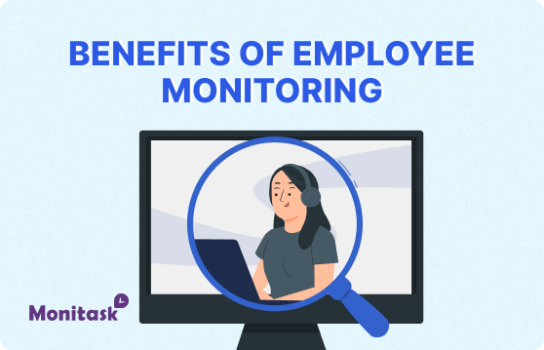Employee Retention
Employee Retention: A Comprehensive Guide for HR Professionals
In today's competitive business landscape, employee retention has become a critical focus for organizations of all sizes. As the cost of recruiting and training new employees continues to rise, companies are increasingly recognizing the importance of retaining their top talent. This comprehensive guide delves into the intricacies of employee retention, offering insights, strategies, and best practices for HR professionals and business leaders.
What is Employee Retention?
Employee retention refers to an organization's ability to keep its employees over a period of time. It's a measure of how well a company can retain its workforce and is often expressed as a percentage. A high retention rate indicates that employees are satisfied with their jobs and are likely to stay with the company for an extended period.
Retention is not just about keeping employees on the payroll; it's about creating an environment where they feel valued, engaged, and motivated to contribute their best work. It's about fostering a culture that encourages long-term commitment and loyalty.
The Importance of Employee Retention
Understanding why employee retention matters is crucial for developing effective strategies. Here are some key reasons why retention should be a top priority:
1. Cost Savings
High turnover can be incredibly expensive. The cost of recruiting, hiring, and training new employees can range from 50% to 200% of an employee's annual salary, depending on the position. By retaining employees, companies can significantly reduce these costs.
2. Improved Productivity
Long-term employees are generally more productive than new hires. They understand the company's processes, culture, and expectations, allowing them to work more efficiently and effectively.
3. Institutional Knowledge
Employees who have been with a company for an extended period accumulate valuable institutional knowledge. This includes understanding of company history, unwritten rules, and complex processes that aren't easily documented. Losing these employees can result in a significant loss of this crucial knowledge.
4. Customer Satisfaction
Experienced employees often have better relationships with customers and a deeper understanding of their needs. This can lead to improved customer satisfaction and loyalty.
5. Company Culture
A stable workforce contributes to a stronger, more cohesive company culture. High turnover can disrupt team dynamics and make it challenging to maintain a consistent culture.
Factors Affecting Employee Retention
To develop effective retention strategies, it's essential to understand the factors that influence an employee's decision to stay with or leave a company. These factors can be broadly categorized into several key areas:
1. Compensation and Benefits
While not the only factor, competitive salaries and comprehensive benefits packages play a significant role in retention. This includes not just base pay, but also bonuses, health insurance, retirement plans, and other perks.
2. Work Environment
The physical and cultural work environment can greatly impact an employee's job satisfaction. This includes factors like office layout, company culture, work-life balance, and relationships with coworkers and managers.
3. Career Development Opportunities
Employees are more likely to stay with a company that offers clear paths for career advancement and professional development. This can include training programs, mentorship opportunities, and clear promotion pathways.
4. Job Security
Employees value stability and security in their jobs. Companies that demonstrate financial stability and a commitment to their workforce are more likely to retain employees.
5. Recognition and Appreciation
Feeling valued and appreciated is crucial for employee satisfaction. Regular recognition of employees' contributions, both big and small, can significantly impact retention.
6. Leadership and Management
The quality of leadership and management within an organization can make or break employee retention efforts. Employees often leave managers, not companies.
Strategies for Improving Employee Retention
Now that we've explored the importance of retention and the factors that influence it, let's dive into some effective strategies for improving employee retention:
1. Offer Competitive Compensation and Benefits
Regularly review and adjust your compensation packages to ensure they remain competitive within your industry and region. Consider offering unique benefits that set your company apart, such as flexible working hours, unlimited vacation time, or wellness programs.
2. Foster a Positive Work Environment
Create a work environment that employees enjoy being a part of. This can include:
- Promoting open communication and transparency
- Encouraging teamwork and collaboration
- Providing comfortable and functional workspaces
- Implementing policies that support work-life balance
3. Invest in Employee Development
Show employees that you're invested in their growth and development. This can include:
- Offering regular training and skill development opportunities
- Providing tuition reimbursement for relevant courses or certifications
- Creating clear career paths within the organization
- Implementing mentorship programs
4. Recognize and Reward Performance
Implement a robust recognition program that acknowledges both individual and team achievements. This can include:
- Regular performance reviews with constructive feedback
- Employee of the month programs
- Bonuses or other incentives for exceptional performance
- Public recognition of achievements in team meetings or company-wide communications
5. Improve Onboarding and Integration
A strong start can set the tone for an employee's entire tenure with your company. Develop a comprehensive onboarding program that:
- Clearly communicates job expectations and company culture
- Provides necessary training and resources
- Facilitates connections with team members and key stakeholders
- Extends beyond the first few days to ensure ongoing support
6. Promote Work-Life Balance
Recognize that employees have lives outside of work and implement policies that support a healthy work-life balance. This can include:
- Flexible working hours or remote work options
- Generous paid time off policies
- Parental leave programs
- Wellness initiatives that encourage healthy lifestyles
7. Foster Open Communication
Create channels for open, honest communication throughout the organization. This can include:
- Regular one-on-one meetings between employees and managers
- Anonymous feedback mechanisms
- Town hall meetings or Q&A sessions with leadership
- Clear communication of company goals and strategies
8. Conduct Regular Stay Interviews
Don't wait for exit interviews to find out why employees leave. Conduct regular "stay interviews" to understand what keeps employees engaged and what might cause them to leave. Use this information to proactively address concerns and improve retention strategies.
9. Provide Opportunities for Impact
Employees want to feel that their work matters. Provide opportunities for employees to make meaningful contributions to the company and communicate how their work impacts the organization's goals.
10. Address Burnout
Be proactive in identifying and addressing signs of employee burnout. This can include:
- Monitoring workloads and redistributing tasks when necessary
- Encouraging employees to take breaks and use their vacation time
- Providing resources for stress management and mental health support
Measuring Employee Retention
To effectively manage employee retention, it's crucial to measure and track it over time. Here are some key metrics to consider:
1. Employee Retention Rate
This is the most basic measure of retention. It's calculated as follows:
Retention Rate = (Number of employees who remained employed for the entire period / Total number of employees at the start of the period) x 100
2. Turnover Rate
The inverse of retention rate, turnover rate measures the percentage of employees who leave the company over a specific period. It's calculated as:
Turnover Rate = (Number of separations during the period / Average number of employees during the period) x 100
3. Average Tenure
This measures the average length of time employees stay with your company. A longer average tenure generally indicates better retention.
4. Cost of Turnover
While more complex to calculate, understanding the cost of turnover can help justify investments in retention strategies. This should include direct costs (like recruiting and training) and indirect costs (like lost productivity).
5. Employee Satisfaction Scores
Regular employee surveys can provide valuable insights into job satisfaction and engagement, which are often predictive of retention.
The Role of HR in Employee Retention
Human Resources plays a crucial role in developing and implementing employee retention strategies. Here are some key responsibilities of HR in this area:
1. Developing Retention Strategies
HR should lead the charge in developing comprehensive retention strategies based on data and employee feedback.
2. Implementing and Managing Programs
From onboarding to professional development programs, HR is often responsible for implementing and managing initiatives that support retention.
3. Monitoring and Analyzing Retention Metrics
HR should regularly track and analyze retention metrics to identify trends and areas for improvement.
4. Conducting Stay Interviews and Exit Interviews
These interviews provide valuable insights into why employees stay or leave, and HR should use this information to refine retention strategies.
5. Training Managers
HR can provide training to managers on retention best practices and how to effectively engage and motivate their teams.
6. Advocating for Employee-Friendly Policies
HR should advocate for policies and practices that support employee satisfaction and retention, such as competitive benefits packages and flexible work arrangements.
Conclusion
Employee retention is a complex challenge that requires ongoing attention and effort. By understanding the factors that influence retention, implementing effective strategies, and consistently measuring and analyzing results, organizations can create an environment where employees want to stay and grow.
Remember, there's no one-size-fits-all approach to retention. What works for one company or industry may not work for another. The key is to listen to your employees, stay attuned to their needs and concerns, and be willing to adapt your strategies as necessary.
Ultimately, a focus on employee retention is an investment in your company's most valuable asset – its people. By prioritizing retention, you're not just reducing turnover costs; you're building a stable, engaged, and high-performing workforce that can drive your organization's success for years to come.
Key Takeaways
- Employee retention is crucial for organizational success, impacting costs, productivity, and company culture.
- Factors affecting retention include compensation, work environment, career development opportunities, job security, recognition, and leadership quality.
- Effective retention strategies range from competitive compensation to fostering a positive work environment and investing in employee development.
- Measuring retention through various metrics is essential for tracking progress and refining strategies.
- HR plays a vital role in developing, implementing, and monitoring retention strategies.
- A focus on retention is an investment in your company's most valuable asset – its people.
By prioritizing employee retention, organizations can create a stable, engaged workforce that drives long-term success. Remember, retaining top talent is not just about keeping employees on the payroll – it's about creating an environment where they can thrive, grow, and contribute their best work.


